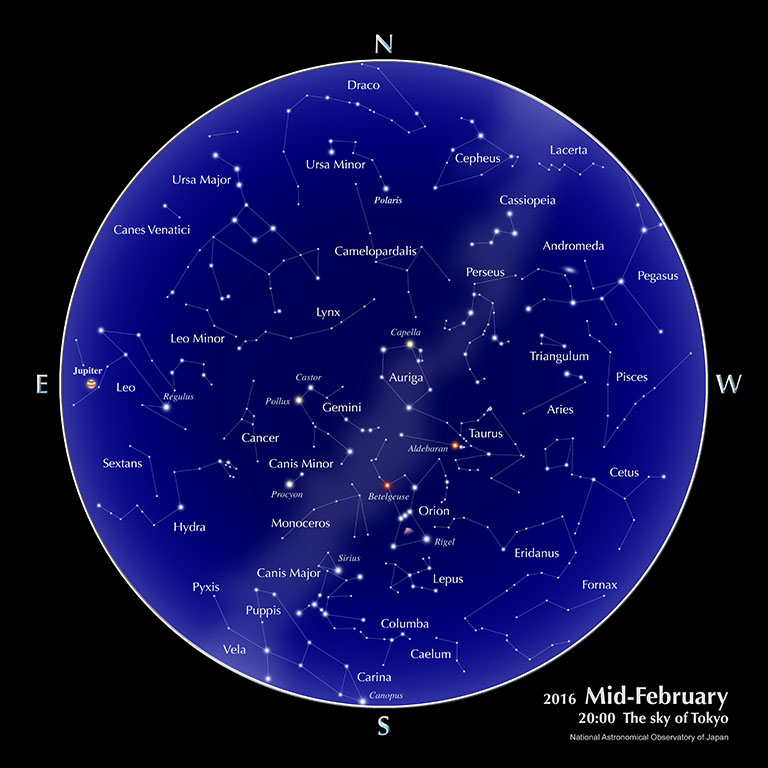Astronomical Information | 2016 | February
The sky of Tokyo

Calendar (February)
| 1 | Last Quarter Moon |
| 7 | Greatest Western Elongation of Mercury |
| 8 | New Moon |
| 11 | National Foundation Day [Kenkoku-Kinen-no-hi] (national holiday) |
| 15 | First Quarter Moon |
| 23 | Full Moon |
| 29 | Neptune at conjunction |
Planets
- Mercury
- Mercury reaches its greatest western elongation on the 7th. In the first part of the month, its elevation is about 10 degrees at 30 minutes before sunrise. You can use Venus to help you find it. From the 1st to the 10th, the brightness is 0.1 magnitude to -0.1 magnitude.
- Venus
- Venus can be seen low in the south-eastern sky before sunrise. Towards the end of the month, its apparent location approaches the Sun, making it difficult to observe. Its brightness is -4.0 magnitude to -3.9 magnitude.
- Mars
- Mars, located in the constellation Libra, can be seen in the southern sky before sunrise. Its brightness is 0.8 magnitude to 0.3 magintude.
- Jupiter
- Jupiter, located in the constellation Leo, can be seen in the eastern sky starting from about 21:00, when viewed from Tokyo. Its brightness is -2.4 magnitude to -2.5 magnitude.
- Saturn
- Saturn, located in the constellation Ophiuchus, can be seen in the south-eastern sky from the beginning to middle of the month. In the last part of the month it moves to the southern sky. The brightness is 0.5 magnitude.
Source: Ephemeris Computation Office, NAOJ
With the “Sky Viewer” you can easily explore the appearance of a typical urban night sky (planets and constellations are visible).The Celestial Phenomena section of the glossary explains the planetary phenomena terms: greatest elongation, opposition, conjunction, stationary, etc.